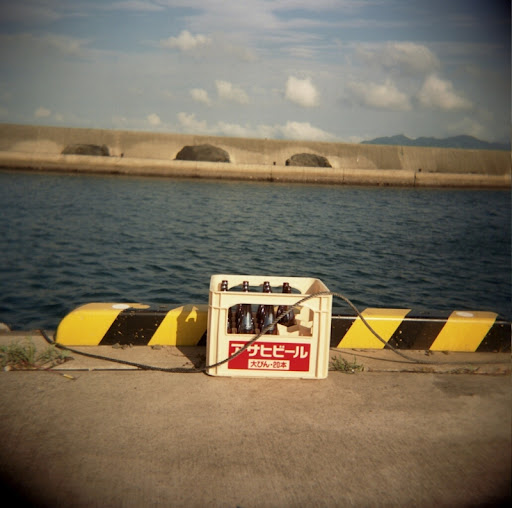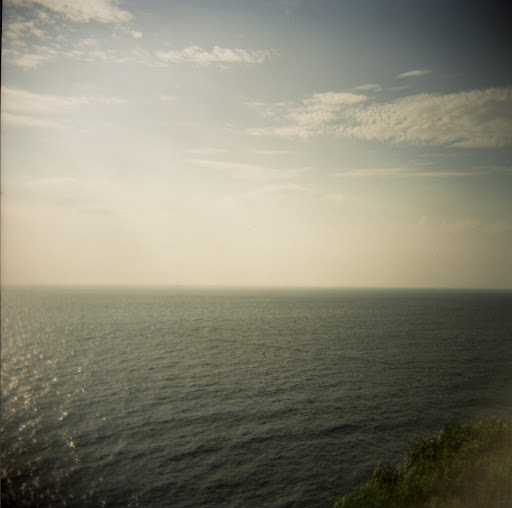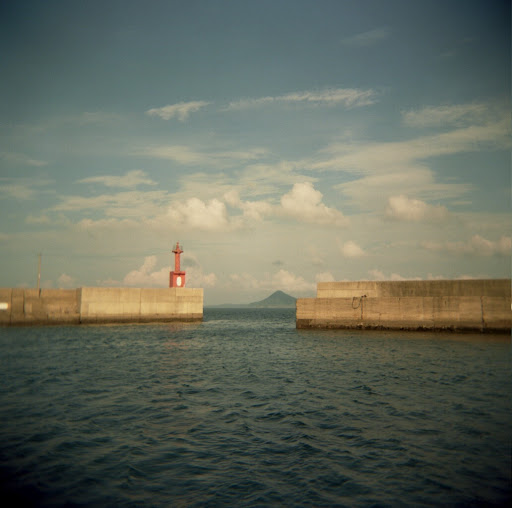Many threads coming together recently, especially around photography and the concept of time. The two main elements in play are a recent post on photography by Errol Morris for the New York Times, and an exhibition of photos by Hiroshi Sugimoto at the de Young in San Francisco.
Errol Morris is a minor hero of mine, for predictable reasons: his documentaries are noted for their visual restraint, he's the mastermind of one of the few brilliant American ad campaigns around and I once read a transcript of a lecture he gave in which he used the word "collection" in a (yes) properly Benjaminian sense. I consider him to be a genius of some sort, which is why it was disappointing to read the following:
I am skeptical and would go even further and suggest that photographs attract false beliefs – as fly-paper attracts flies. Why my skepticism? Because photography can make us think we know more than we really know.
It is easy to confuse photographs with reality. To many of us, photographs are reality. But however real they may seem, they are not reality. Reality is three-dimensional. Photographs are but two-dimensional, and record only a moment, a short interval of time snatched from the long continuum of before and after.
I imagine that this article contains an unwritten valorization of cinema over photography, because of its privileged ability to record more than "only a moment." Later in this article Morris explicitly bodies forth the notion of truth, which is a very sticky concept. I have two thoughts here, about cinema and about photography.
In the first place, I'm shocked that Morris would bash photography in this way, because I don't believe that he could stake an claim to truth on behalf of the documentary film with a straight face. (Could he?) Films like "Gates of Heaven" and "Vernon, Florida" are effective because he takes himself "out of the picture" as much as possible; there are never any captions on screen, the camera doesn't move much and the editing is slow. Yet these are all deliberate techniques to lend his films a sense of "authenticity"--in other words to fool his audience into thinking that they are looking at as truthful a representation as could be imagined. (The audience does not think is that it's as truthful a representation as could be, say, pieced together in the editing room!)
It's to Morris' credit that when I think of the subjects of his documentaries, I really do have the feeling that they are allowed to "speak for themselves," by which I mean I get the sensation that this is "really" "how they are." (My excessive use of scare quotes here is to show that I'm exaggerating a bit, and also to show that it's hard to separate out truth-content from words.) But how can I know that this isn't all a fabrication, that Morris isn't using his 24 images per second to lead me towards "false beliefs"--instead of manipulating visual data, he'd be manipulating time! I'll stop there, enough polemic.

Morris' distrust of photography is based on the assumption that photographs "record only a moment, a short interval of time snatched from the long continuum of before and after." Here are some more of Sugimoto's seascapes. In these photos, like in Morris' documentaries, the sea is allowed to speak for itself. The composition is deferential to the subject; Sugimoto does not impose himself on the photo. Again, this is a Morris-like quality. However, there's no attempt to "document" "something," because the photograph is (by Sugimoto's admission) meant as a reflection on a kind of timelessness, in other words "the long continuum of before and after," just what is inaccessible to a photograph according to Morris.
Is Sugimoto successful? I think so. Although it appears that Sugimoto has removed himself from the photo, there is a perspective here: the ocean is not flat, it's shot at an angle. The timeless quality of the material is easily understood, as the open sea looks today just as it would have any number of years ago. But in each case, Sugimoto allows the horizon to perfectly crush everything else in the frame. What else could indicate more clearly that he's aware of the real limits of photography?
(What is this limit? What is the limit to which a photograph can be said to be "truthful"? What can't be condensed into a single image? Sugimoto asks these question, but they're not completely answerable. Whatever's left over provides the tension that drives his work.)
























